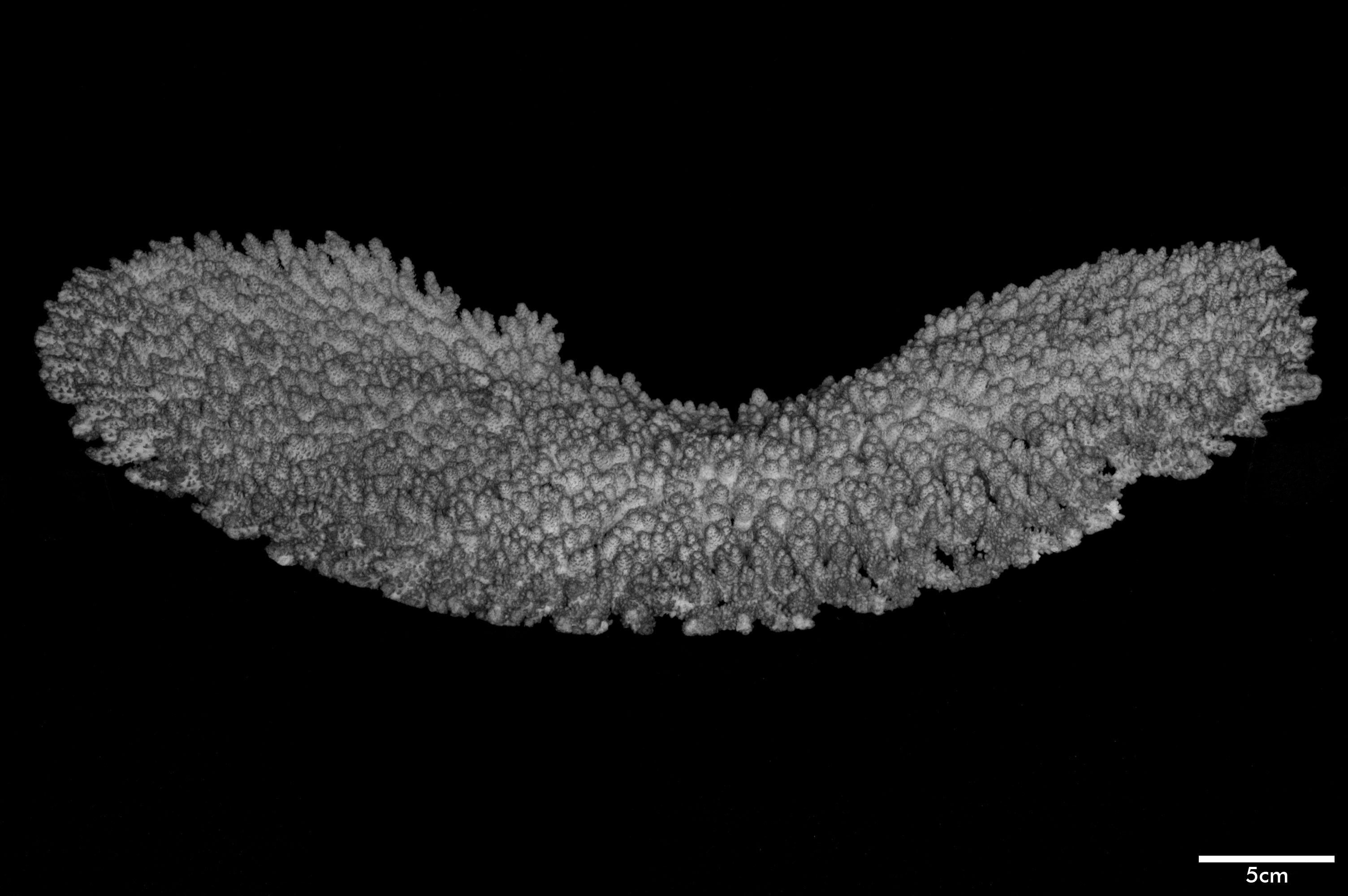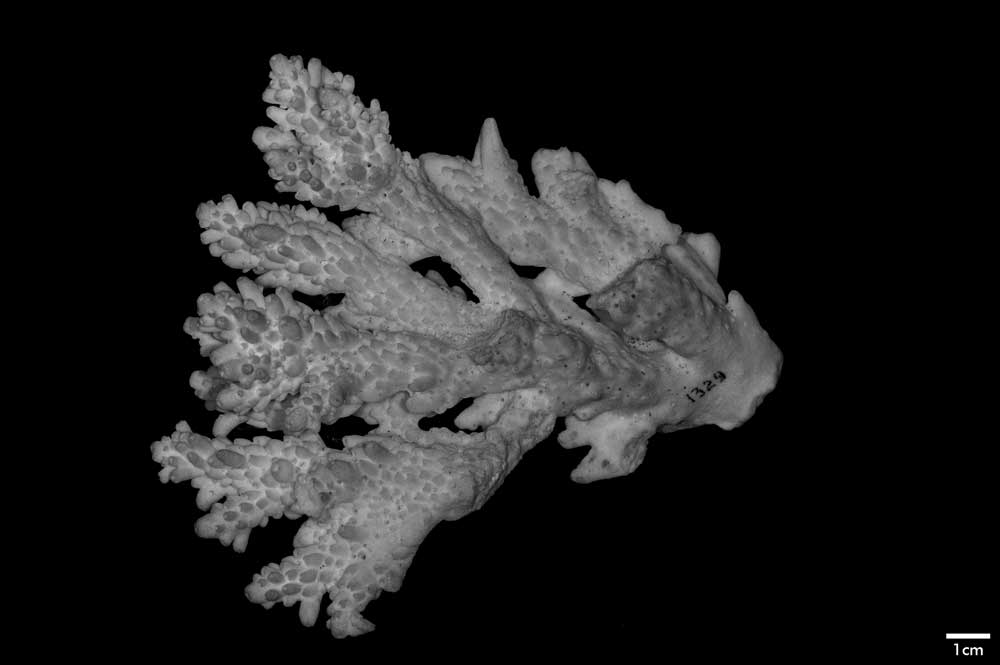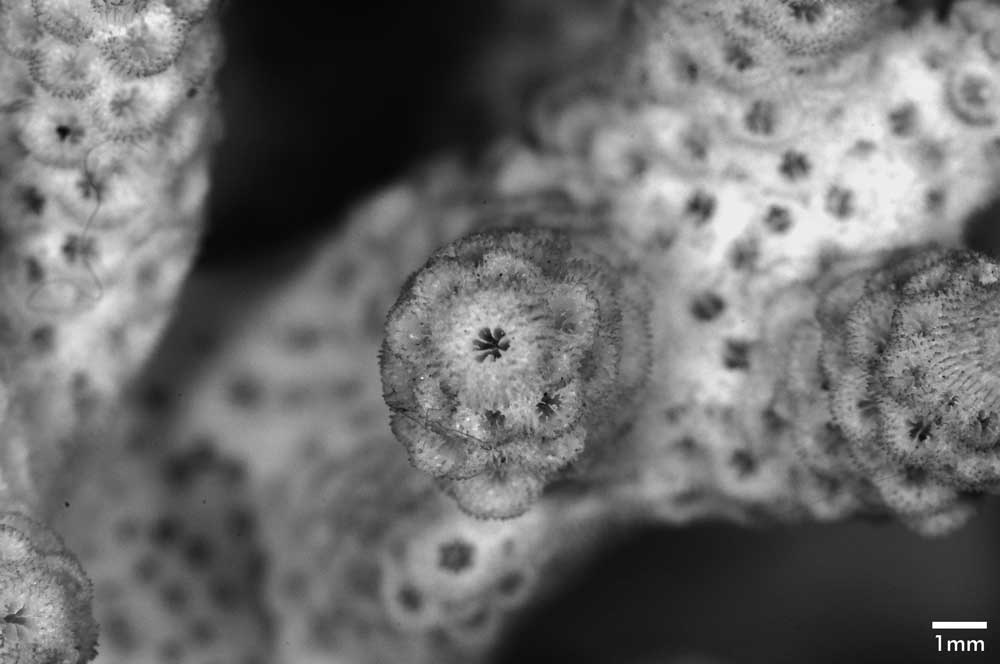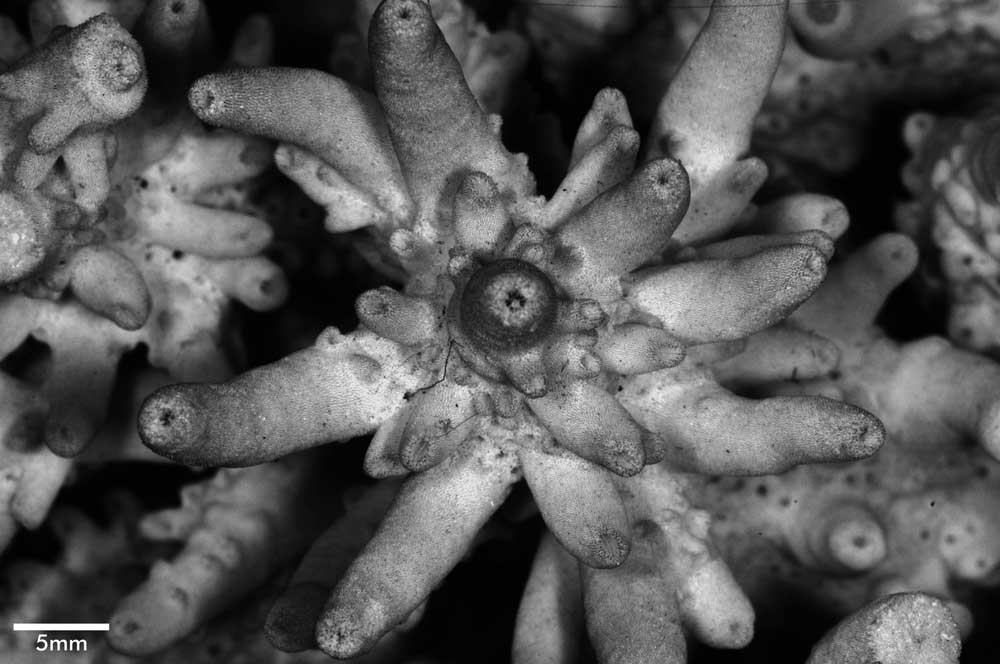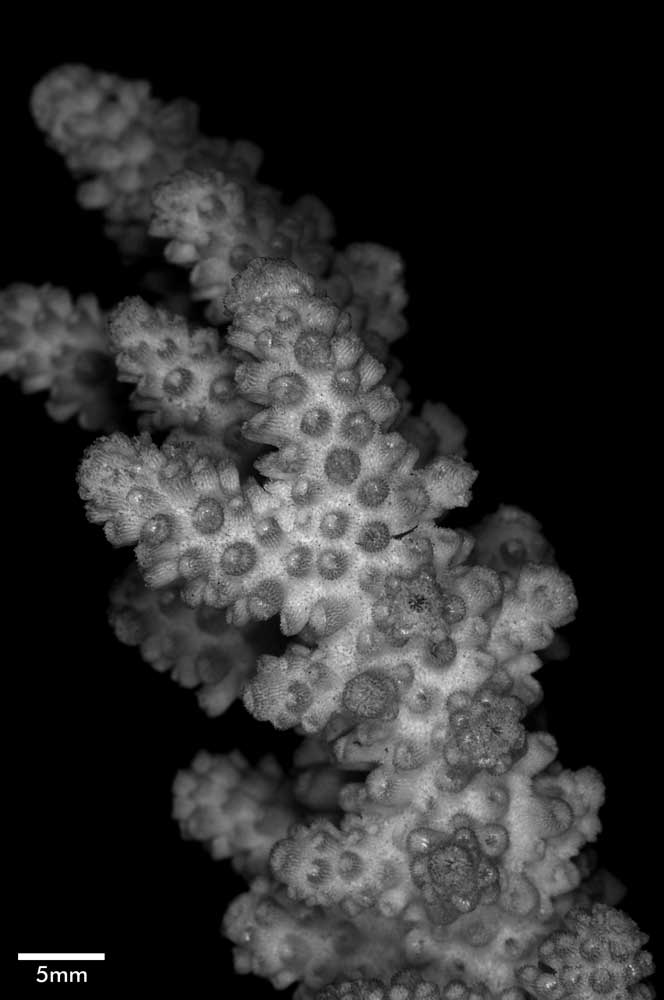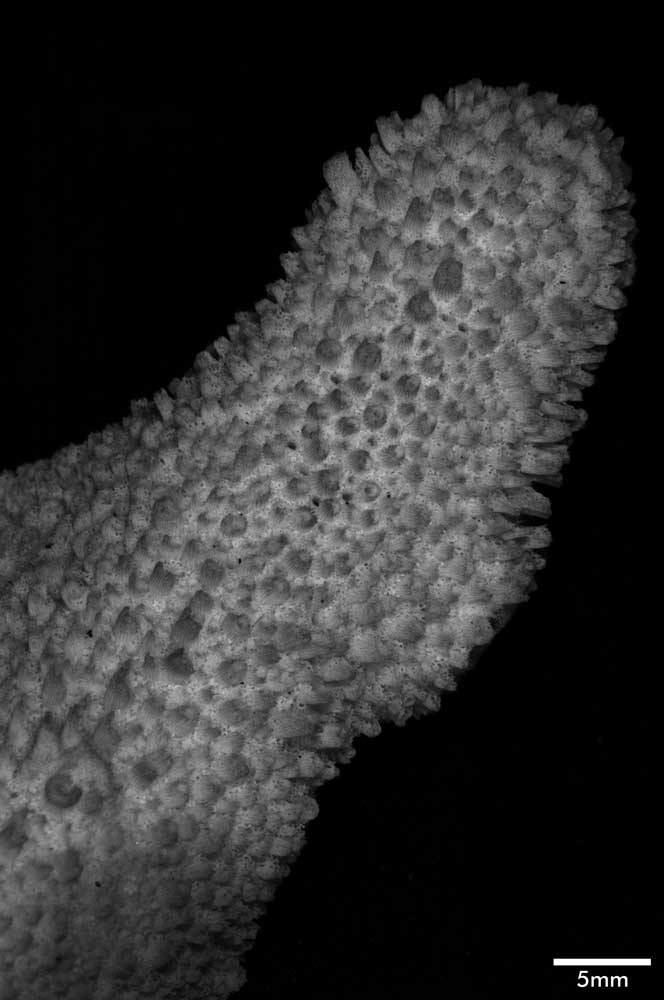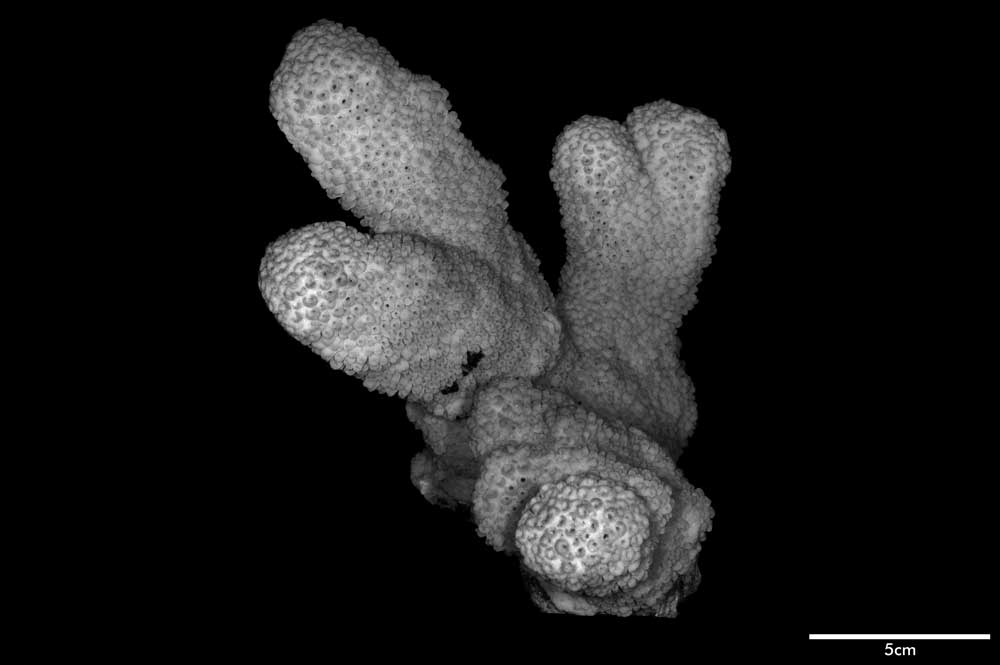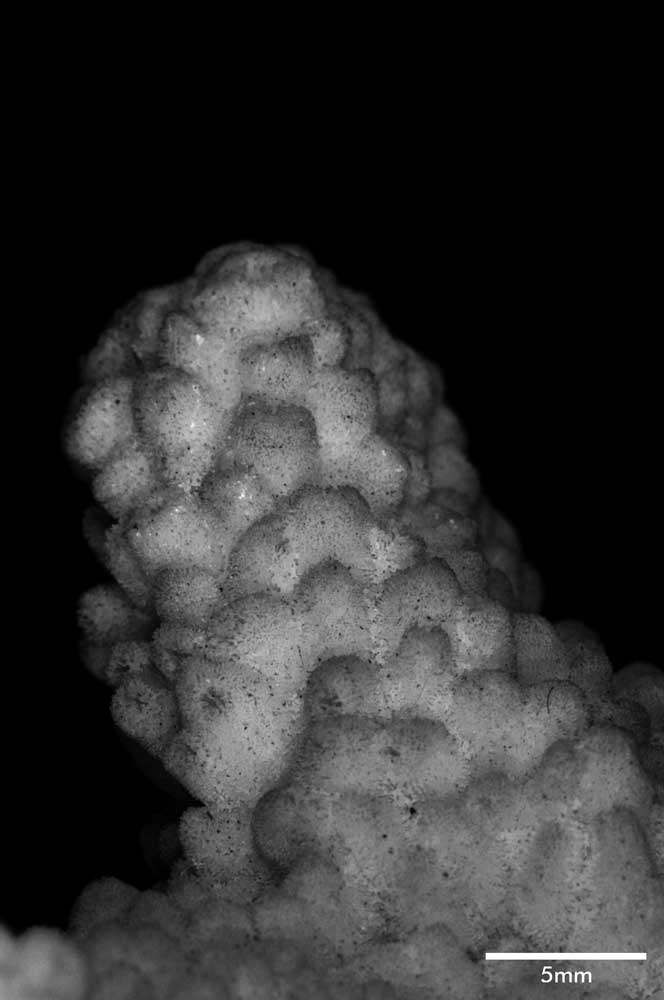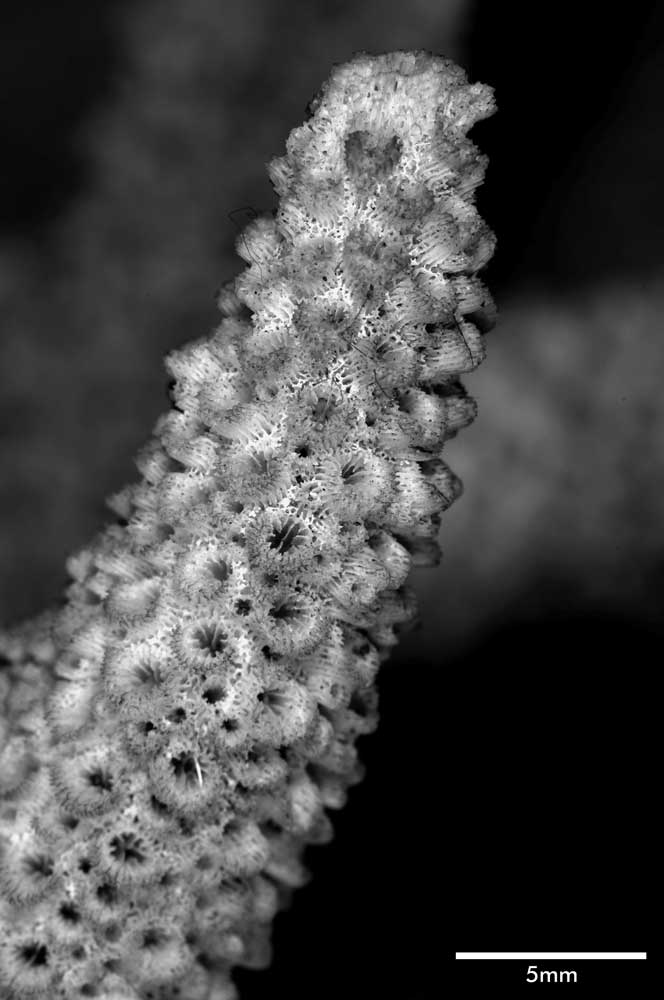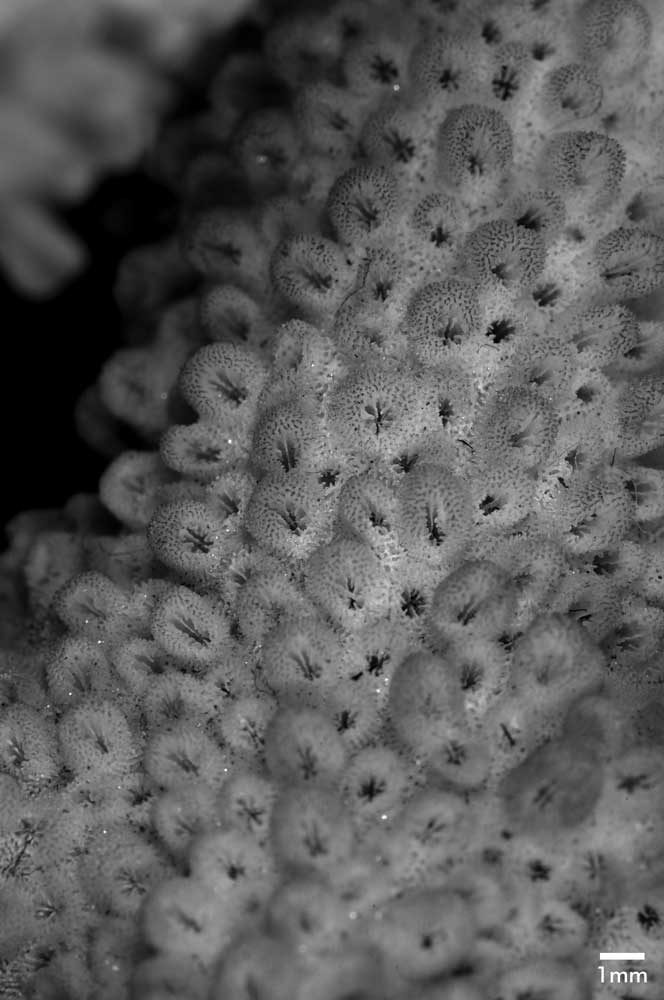Acropora bifurcata
Nemenzo, 1971
Corallum fan-shaped, attached on narrow edge, spreading almost horizontally outward. Attachment by broad solid plate from which branches arise, anastomosing closely leaving narrow, elongate meshes-anastomoses so complex that courses of individual branches and their respective subdivisions difficult to follow to edge. Branches laterally compressed, varying in width from 7-13 mm at point of origin. Undersurface devoid of branchlets and bears only subimmersed, dispersed corallites except towards tips where corallites are long, appressed, crowded tubulars. Upper surface bears numerous slightly ascending branchlets, most in groups of 2 to 5, although many are solitary. Branchlets most tapering with blunt tips, up to 10 mm high (mostly less), average diameter 5-7 mm at base, 3-4 mm just below axial corallite (measurement includes radial corallites).
Axial corallite slightly less than 2 mm across, only slightly exsert from level of youngest radials; wall slightly thick but very porous, delicate, round edged. Calicinal fossa mostly open, funnel-shaped. Some axials with asymmetrical septal development, others have 6 rather, very thin primaries (directive usually not distinguishable) and narrow secondaries, hardy half the width of primaries.
Radial on branchlet projecting around forty-five degrees. Those on young branchlets near edge of corallum flat labellate with rounded or truncate margin, becoming spout-shaped or dimidiate towards base. On older branchlet, radials labellate but lips bifurcate. Radials on upper surface of branches crowded, with prominent vertical lips, except near base of attachment where subimmersed corallites found; their lips either bifurcate or ligulate or with truncate margin.
Septa on radial poorly developed – come with 2 primaries only, other with few septa projecting slightly inward like miniature teeth. Most have empty calices. Calicinal fossa cylindrical; if septa present they are usually at bottom.
Remarks:This species has some resemblance with A. pectinata. Its distinguishing characteristics are close anastomosis of its branches, its tapering branchlets (ramiculi) which are numerous, the bifurcate lips of radial corallites and the more prominent corallites on the upper surface of the branches.



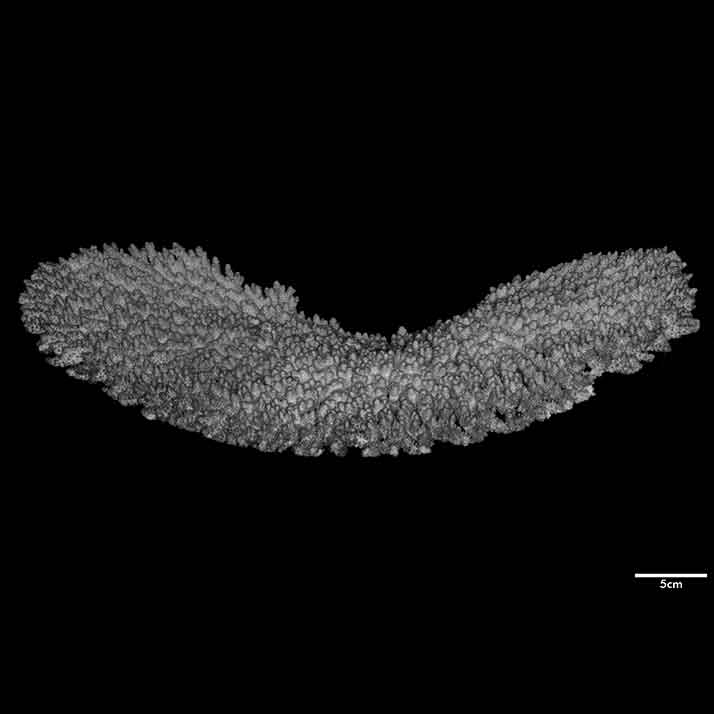
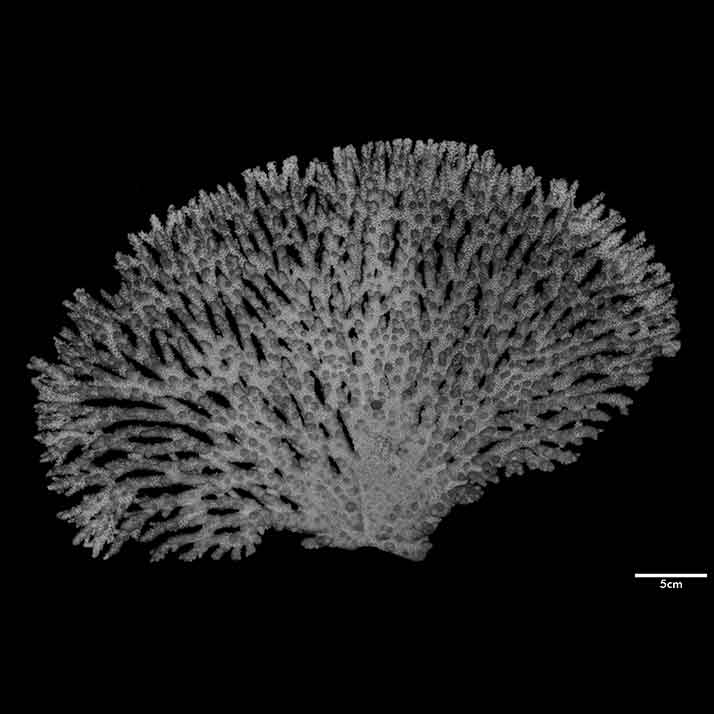
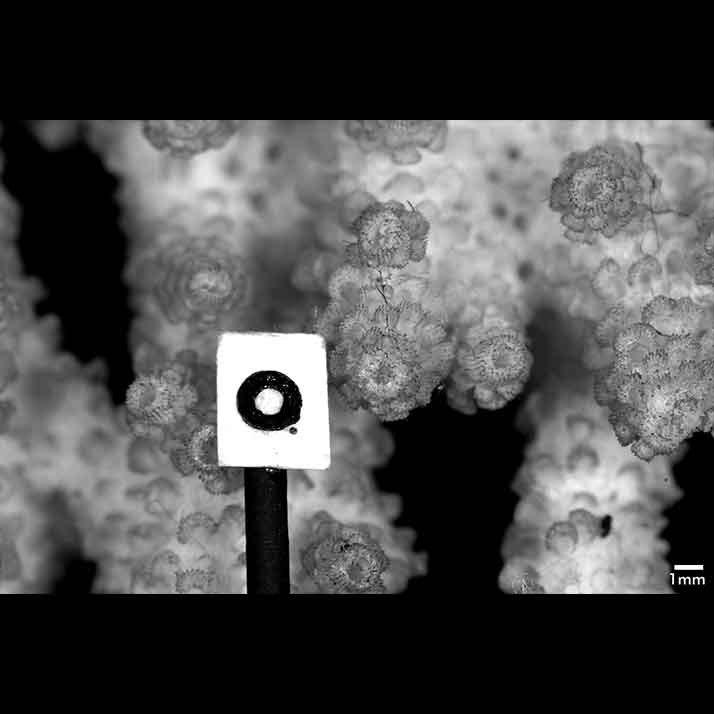

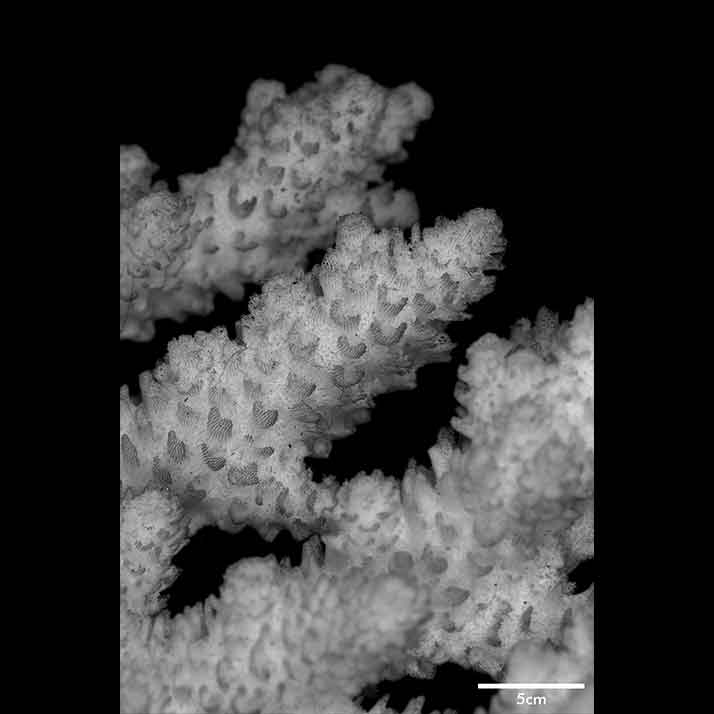

 Type Specimen Location:
Type Specimen Location:  Material:
Material:


